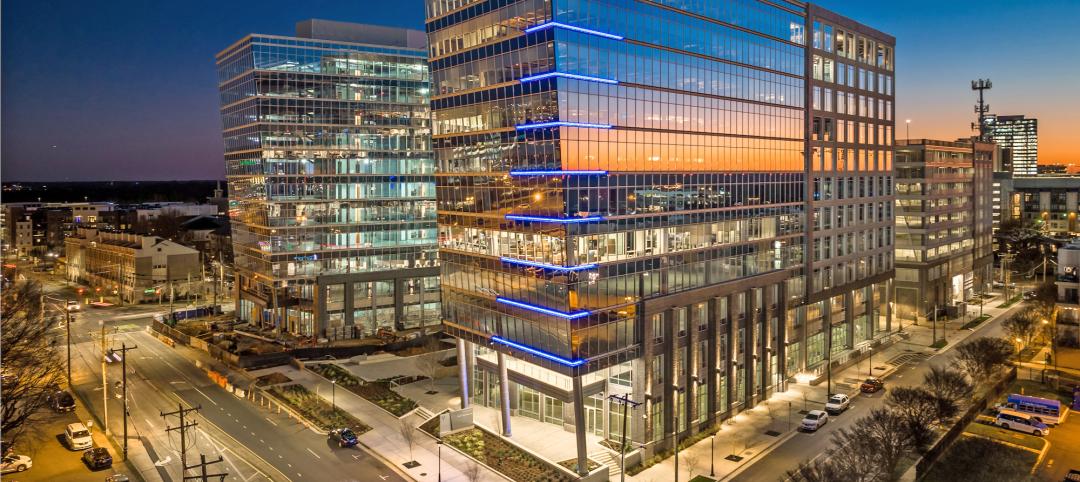Is the construction industry up to the challenge of repairing the world’s crumbling infrastructure? A new report from McKinsey & Co. answers with a definitive “No,” unless the industry can place itself firmly into the digital future in its organization, documentation, management, and information sharing.
The think tank estimates that the world will need to spend $57 trillion on infrastructure by 2030 just to keep pace with global economic growth. A recent report by three of its researchers also sees a construction industry that takes 20% longer than scheduled to finish most projects that come in up to 80% over budget.
“Construction productivity has actually declined in some markets since the 1990s,” writes the report’s authors, Rajat Agarwal, Shankar Chandrasekaran, and Mukund Srishar, in an article they posted last month. “The construction industry is ripe for disruption.”
Such observations are hardly new; there have been myriad other reports that lament the same problems in the construction sector, and fret about how massive reconstruction can possibly be accomplished.
What makes this paper a little different is that the “five big ideas” proposed by its authors aren’t at all futuristic.

Five trends that are making the construction process run smoother and quicker. Image: McKinsey & Co.
The authors basically believe that the construction industry needs to be reorganized around digital technology, including:
•Higher-definition surveying and geolocation
•Next-generation 5D BIM
•Digital collaboration and mobility
•The Internet of Things (IoT), coupled with advanced analytics
•Future-proof design and construction with sustainable materials and methods.
Within these trends, McKinsey sees LIDAR as “an evolution in surveying,” primarily because of breakthroughs in drone technology and handheld platforms.
Five-D BIM goes beyond 3D BIM by taking into account a project’s cost and schedule. “The visual and intuitive nature of 5D BIM gives contractors a better chance to identify risk earlier, and thus to make better decisions.” Augmented reality technology will further enhance the effectiveness of 5D BIM, which project owners and contractors “need to incorporate right from the design stage.”
McKinsey revisits the need for the construction sector to move aggressively toward online communication as a way of improving productivity. Paper, the report argues, makes data analysis among team members tougher, and is subject to being mismanaged among different stakeholders.
By comparison, the authors point to an American tunnel project that involved 600 vendors, for which the contractor developed a single platform for bidding, tendering, and contract management. “This saved the team more than 20 hours of staff time per week, and cut down the time to generate reports by 75%,” they write.
Perhaps more to the point, the digital-collaboration and mobility solutions segments have attracted close to 60% of all venture capital funding in the construction-technology sector.
The report also suggests several advantageous potential uses for IoT working in combination with sensors and near-field-communication devices. These uses include equipment monitoring and repair, inventory management and ordering, quality assessment, energy efficiency (such as sensors monitoring ambient conditions and fuel consumption of equipment), and safety.
As for future proofing projects, the report lists a host of new building materials—self-healing concrete, aerogels, nanomaterials—and construction approaches—like 3D printing and preassembled modules—that could lower cost and speed up the construction process.
“Some of these ‘materials of the future’ could redefine how projects are conceptualized, designed, and executed,” states the report. It notes, however, that adoption of these materials has been slowed by a lack of awareness and availability, limited supply chain, and the industry’s risk aversion.
While 80% of all construction work is still done on-site, more project developers and contractors are deploying off-site approaches “that help them improve predictability, consistency, and repeatability.” These approaches include preassembly of components and simply structures, 3D printing, and robot-assembled construction.
None of these recommendations will surprise any nonresidential contractor. The question, though, is why aren’t these ideas being implemented more widely? The McKinsey authors say the industry needs “to adopt a new mindset” whose foundation is shared responsibility, and has four principles:
•Transparency and risk sharing in contracts
•Return-on-investment orientation
•Simplicity and intuitiveness in the design of new solutions
•Change management (as in top management communicating clearly why changes are important)
Project owners and developers need to mandate the adoption of digital technologies and measure results. This should include appointing a Chief Technology Officer or Chief Innovation Officer who can think boldly about the company’s digital agenda.
Engineers and contractors need to develop “digital road maps” for project management. “And it’s important to ensure that project teams have the budgets and authority they need to pilot new technologies. It’s essential to build the capabilities of project managers so they can become digitally adept.”
Related Stories
75 Top Building Products | Nov 30, 2022
75 top building products for 2022
Each year, the Building Design+Construction editorial team evaluates the vast universe of new and updated products, materials, and systems for the U.S. building design and construction market. The best-of-the-best products make up our annual 75 Top Products report.
K-12 Schools | Nov 30, 2022
School districts are prioritizing federal funds for air filtration, HVAC upgrades
U.S. school districts are widely planning to use funds from last year’s American Rescue Plan (ARP) to upgrade or improve air filtration and heating/cooling systems, according to a report from the Center for Green Schools at the U.S. Green Building Council. The report, “School Facilities Funding in the Pandemic,” says air filtration and HVAC upgrades are the top facility improvement choice for the 5,004 school districts included in the analysis.
Retail Centers | Nov 29, 2022
'Social' tenants play a vital role in the health of the retail center market
After a long Covid-induced period when the public avoided large gatherings, owners of malls and retail lifestyle centers are increasingly focused on attracting tenants that provide opportunities for socialization. Pent-up demand for experiences involving gatherings of people is fueling renovations and redesigns of large retail developments.
Giants 400 | Nov 28, 2022
Top 130 Office Sector Contractors and CM Firms for 2022
Turner Construction, STO Building Group, Gilbane, and CBRE top the ranking of the nation's largest office sector contractors and construction management (CM) firms for 2022, as reported in Building Design+Construction's 2022 Giants 400 Report.
Legislation | Nov 23, 2022
7 ways the Inflation Reduction Act will impact the building sector
HOK’s Anica Landreneau and Stephanie Miller and Smart Surfaces Coalition’s Greg Kats reveal multiple ways the IRA will benefit the built environment.
Multifamily Housing | Nov 22, 2022
10 compelling multifamily developments debut in 2022
A smart home tech-focused apartment complex in North Phoenix, Ariz., and a factory conversion to lofts in St. Louis highlight the notable multifamily developments to debut recently.
Industrial Facilities | Nov 16, 2022
Industrial building sector construction, while healthy, might also be flattening
For all the hoopla about the ecommerce boom and “last mile” order fulfillment driving demand for more warehouse and manufacturing space, construction of industrial buildings actually declined over the past five years, albeit marginally by 2.1% to $27.3 billion in 2022, according to estimates by IBIS World. Still, construction in this sector remains buzzy.
Wood | Nov 16, 2022
5 steps to using mass timber in multifamily housing
A design-assist approach can provide the most effective delivery method for multifamily housing projects using mass timber as the primary building element.
Giants 400 | Nov 14, 2022
Top 60 Airport Terminal Contractors + CM Firms for 2022
Hensel Phelps, Turner Construction, Walsh Group, and Holder Construction top the ranking of the nation's largest airport terminal contractors and construction management (CM) firms for 2022, as reported in Building Design+Construction's 2022 Giants 400 Report.
Giants 400 | Nov 14, 2022
4 emerging trends from BD+C's 2022 Giants 400 Report
Regenerative design, cognitive health, and jobsite robotics highlight the top trends from the 519 design and construction firms that participated in BD+C's 2022 Giants 400 Report.

















